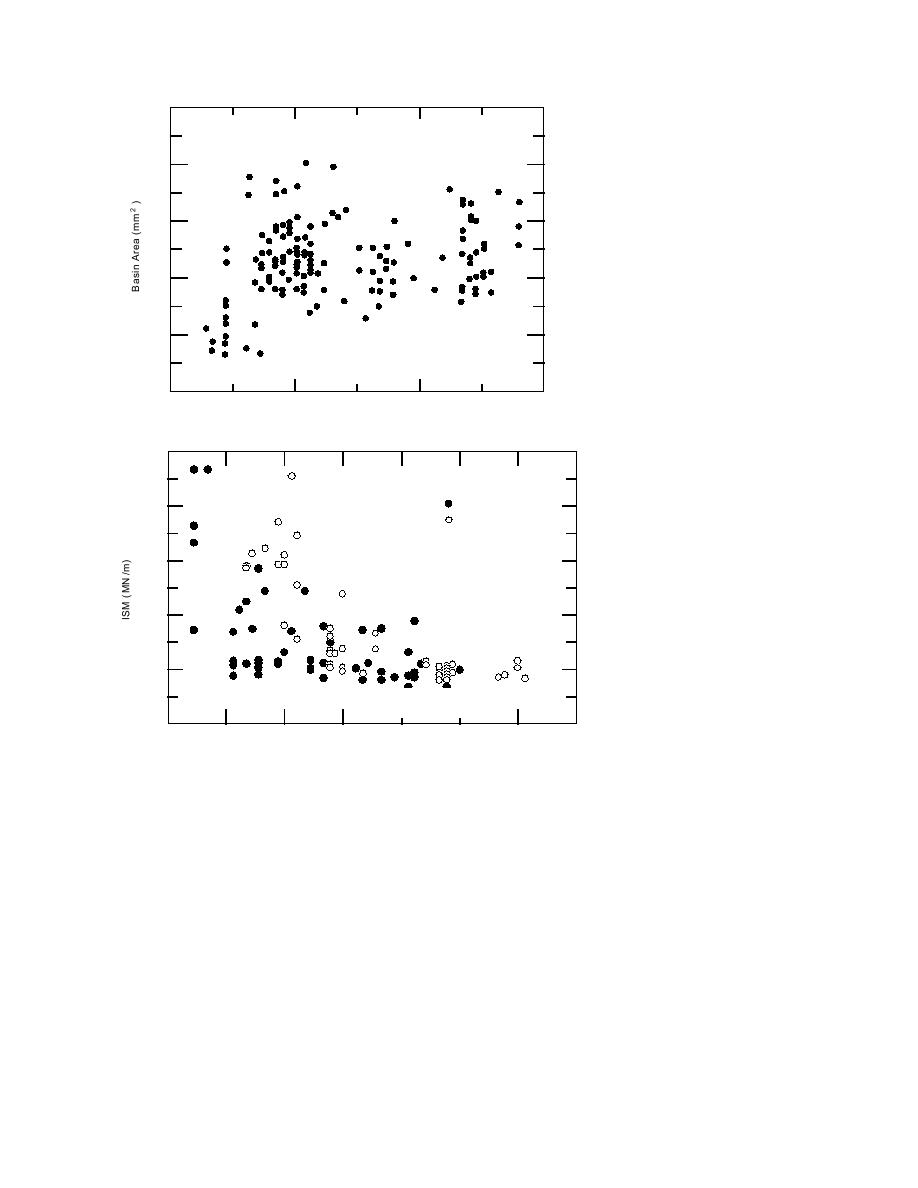
1000
conditions. At CWA, bedrock is
close to the surface in some loca-
Outagamie County Airport
tions. It is possible that, because
800
of the shallow bedrock locations,
the frozen and thawed layers have
a greater effect on the basin area,
600
as reflected by the surface temper-
ature. This does not explain the
change in the basin area in the re-
covery period, where the tempera-
400
tures were above 0C.
Backcalculation of
200
layer moduli
Layer moduli were backcalculat-
ed using WESDEF and ILLIBACK.
0
10
20
30
WESDEF was developed by the
Surface Temperature (C)
Corps of Engineers (Waterways Ex-
a. Outagamie County Airport.
periment Station). Although it is
2000
considered to be a five-layer analyt-
ical tool, it can backcalculate a max-
Central Wisconcin Airport
imum of four layers at one time. The
Runway 88 -6 6
Run
0-2 2
1600
fifth (bottom) layer has been "fixed"
Run
Runway 17--35
35
to act as a rigid layer. From our ex-
perience, reasonable results are
1200
obtained if the number of backcal-
culated layers is kept to three. We
attempted to backcalculate the
800
layer moduli of the PCC pavement
structures at OCA and CWA. The
pavement structure at OCA was
400
idealized as shown in Figure 14a.
The idealized pavement structure
used at CWA is shown in Figure
0
14b. The depth of subgrade to bed-
5
0
5
10
15
20
25
30
rock at CWA was estimated from
Surface Temperature ( C)
drawings found in a pavement
b. Central Wisconsin Airport.
evaluation report (CMT 1984).
Figure 13. Relationship between surface temperature and ISM.
In the first attempt at OCA, the
moduli of all three layers during
the spring thaw period were backcalculated. We found,
At CWA, however, it was apparent from Figure
in most cases, that errors between the calculated and
12b that the basin area on both runways increased
measured deflections were large (more than 50%). We
with increasing surface temperature. The ISM (Fig.
also found that, in many instances, the PCC modulus
13b) was fairly indifferent to surface temperatures
greater than 10C. The earlier effects could be ex-
exceeded the upper limit of 69,000 MPa set in the pro-
plained by the changes in subsurface layers as thaw
gram (the modulus of PCC is usually in the range of
progressed.
27,000 to 42,000 MPa) and the base course modulus
Initially, we thought that the effect on the basin
was near zero (in some cases it was zero). In the subse-
area was attributable to curling of the PCC pavements
quent attempt, the PCC layer modulus was fixed at
with temperature gradients, since the slab area on run-
27,580, 34,475 or 41,370 MPa. The following obser-
way 17/35 was 7.6 m square and that on runway 8/26
vations were made from the results:
was 6.1 by 3.8 m. However, we found that the slab
1. Increasing the PCC stiffness from 27,580 to
dimensions at OCA were also 6.1 by 3.8 m. The big
41,370 MPa reduced the errors to more reasonable
(AA < 20%) differences between the measured and
difference between OCA and CWA is the subsurface
14



 Previous Page
Previous Page
